CASTELBUONO
CASTELBUONO
THE MUSEUM OUTSIDE THE MUSEUM
From March to June 2024 Details was in residence in Sicily in Castelbuono (PA) as a guest of the Minà Palumbo Nature Museum.
Castelbuono is surrounded by greenery; a medieval jewel set among the mountains of the Madonie Park overlooking the Tyrrhenian Sea.
Castelbuono is a town renowned for its quality of life, food, clean fresh air, donkeys collecting recycling, and a wide range of cultural offerings.
Castelbuono for a few years now has been home – headquarters of our Association The Boar and the Whale APS(Website) .
So it was not easy for Pīnar and me to break away from the “known” to try to review this place with new eyes.
The collaboration with the Naturalistic Museum-(Website)-and with the extraordinary work of Physician and Naturalist Francesco Minà Palumbo gave us an incredible opportunity.
We have completely immersed ourselves in the study of this genius, this volcano of ideas that in the 1800s explored far and wide the Madonita territory cataloging, illustrating, and narrating the local fauna and flora, archaeology, zoology as well as agricultural traditions and techniques.
Fantastic and Botanical Trails
We delighted and inspired ourselves by studying his illustrations, and his herbarium; we lost many optical degrees by trying to read his countless epistolary exchanges with scholars all over Europe!
We fell in love studying, in addition to his publications, the infinity of his articles(Website) ranging from “the loves of insects” to “equestrian proverbs” to “bird sight” to “wines of 1882” etc… in short, an absolute genius, out of the ordinary and totally ahead of his time.
Castelbuono was the FIRST time we created a FIXED route of Details, and we are overjoyed about it.
So we have worked to create a Museum outside the Museum, a path that starting from the center of the town accompanies the visitor to the entrance of the Museum.
In the designs we were greatly inspired by the work and illustrations of Francesco Minà Palumbo, the scientific collections housed in the Museum and our own personal vision of Castelbuono.
However, we wanted to mix the scientific aspect with a sometimes childish, always playful, and fantastictouch… which for us is closely related to the beauty and mysteries of nature… and the forest!!!
Pop Epic of Natural Genius
We have tried to make a more POP version of Francesco Minà Palumbo who, purists forbid, remains for us an authentic ROCK STAR!!!!
We wanted to tease visitors by giving them through “peeling walls” a glimpse of what is visible inside the Museum, ranging from scientific data to anecdotes and reveries.
Trying to create an itinerary suitable for an audience of all ages.
We therefore thank all the STAFF of the Nature Museum, and the many local and non-local friends and artists who helped us along this path; artists to whom we “entrusted” some spots and who enriched this work with their drawings: Stefania Cordone, Pino Pollara, Ambra Mediati of the “Chi Semina Raccoglie” Association, from Turkey Ebru Bekaroglu… and from Milan, although of Castelbuonese origins, the incredible 81-year-old Enzo Di Garbo who already several years ago had done a graphic work, related to pareidolia precisely with the stones of Santa Maria beach .
PATH IN AUTONOMY
See the 13 simple rules to follow during urban exploration.
Dear explorers, dear explorers welcome and welcome to the Details #Castelbuono “The Museum Outside the Museum” route promoted by the Francesco Minà Palumbo Nature Museum. By placing your cursor over each point you will be able to consult the rules for walking the route correctly.
Enjoy your exploration!
If you enjoyed the experience, follow us on social channels related to @details .
Don’t stop exploring, and at the end of all our going we will return to the starting point and know that place for the first time.
Four Quartets – T. S. Eliot.
DEPARTURE
Start the route from No. 1 and continue to the end.
RESPECT
Respect the community you are exploring, whether it is public or private property.
INTERPRET
Before framing the Qr Code try your own interpretation of the stain.
If you are with amicihe or family members, do this exercise as a group.
POINT OF VIEW.
Look at the stain up close and from a distance.
Change the point of view!
SCAN THE QR
Scan the Qr code with your internet-connected phone or tablet and look at the drawing.
Slide the cursor over the image with your finger to view the drawing.
ENJOY THE DETAILS
After looking at the design as a whole you can pinch the image to enlarge it.
Take the time to enjoy all the details.
Look without judging.
CONFRONT
Compare the drawing with the stain again by moving the cursor up and down.
This can also be done with the enlarged image.
CONTINUE
When you feel satisfied proceed to the next spot.
If you do not have a paper map help yourself by opening the map link found in the relevant route on the website.
STORIES
Pay attention to the micro and macro stories around you.
LOOK UP
Occasionally look up, if there are beautiful clouds pause to look at them!
THE OBSTACLE.
Along the way you will encounter "an obstacle" -- a mistake.
Will you be able to face it and solve it?
REINVENE
Along the way you will encounter many other peeling walls, if you have time and desire have fun reinventing them.
FOCUS
Along the way try to stay focused on this activity and try not to talk about ...soccer, cars, video games, shopping, food (...).
THE PATH.
FOLLOWING ARE THE VISUALIZABLE IMAGES ALONG THE Details route at CASTELBUONO: THE MUSEUM OUTSIDE THE MUSEUM.
By clicking on the image the work will be opened in full screen you can view the imperfection of the wall before and after the artistic intervention.
Click on the image to view full screen before and after.

Madonie
Visible are Francecso Minà Palumbo, a map of Castelbuono from the mid 1800s – Minà Palumbo’s time.
Also present are some animals from the Madonita territory: a fox, a crested porcupine, a Sicilian partridge, and a bearded vulture.
The latter extinct in the Madonie, but present at the time of Minà Palumbo, and sighted by him.
“The Madonie (…) high and pleasant mountains in every part, vast verdant and flowering prairies, an extensive valley in the center crowned by mountains abundant and clear waters spring in many places, and meandering in tortuous loops descend into the ime valleys: in the nemorous region vegetates the shady beech, the evergreen elk, the holly, the fragrant laurel, the tall and robust oak, which with their shade and coolness, are truly opportune to summer voluptuousness (…)”
F. Minà Palumbo, Introduction to the Natural History of the Madonie Mountains (1844)
—————–
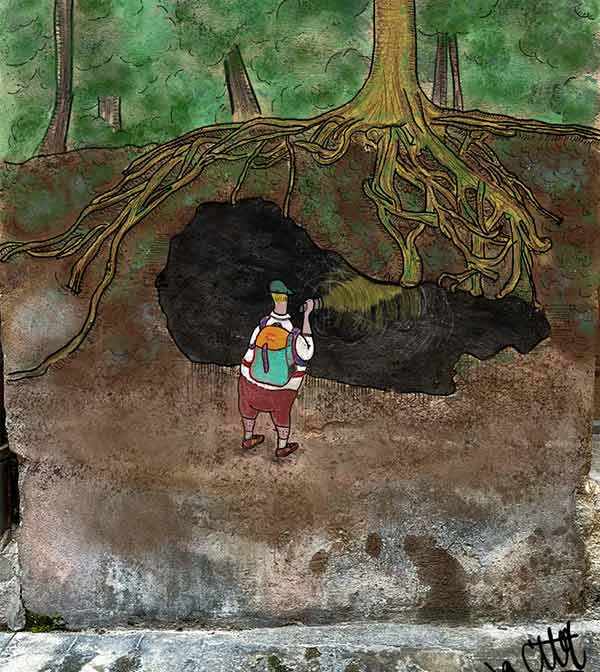
Explorer
—————–
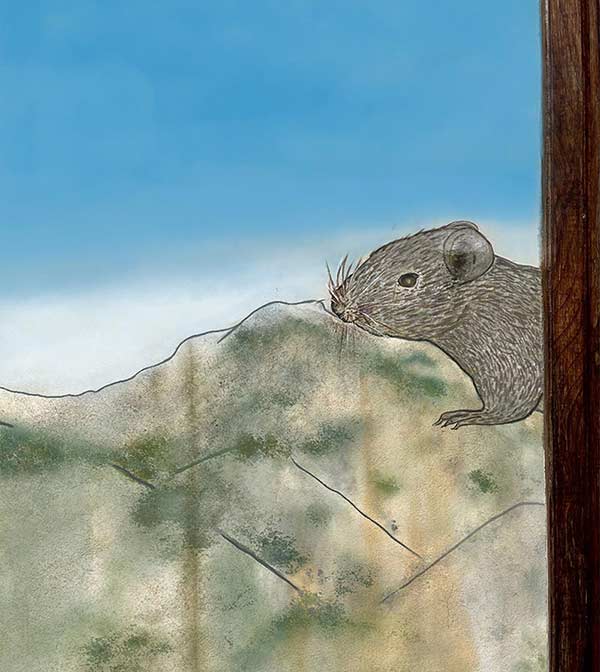
Monticelli
—————–
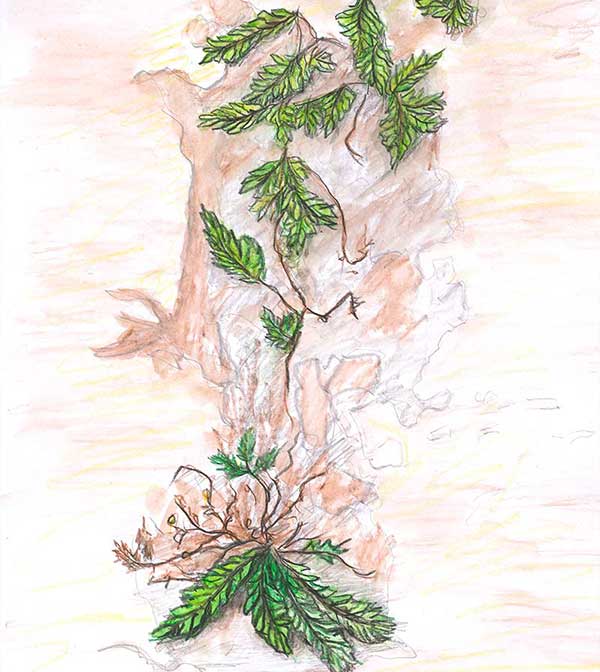
Wall fern
In this drawing the wall fern…visible on many Castelbuonese building walls.
—————–
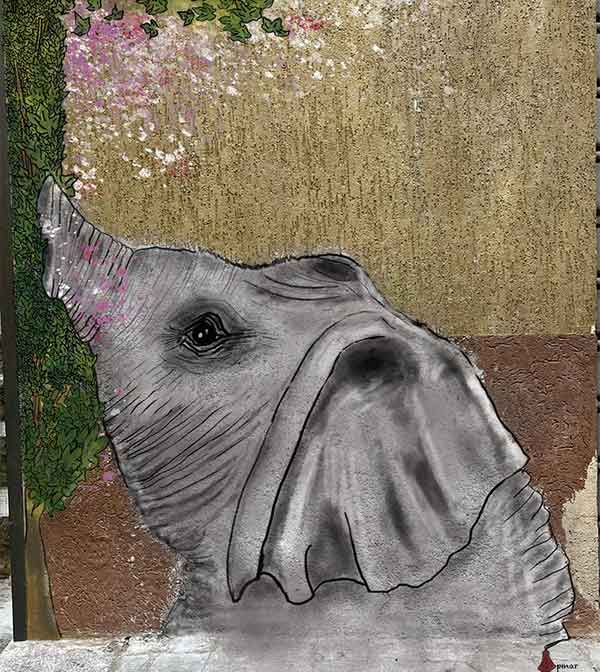
Palaeoloxodon Falconeri
1.05 at the withers.
The Dwarf Elephant of Sicily (Elephas falconeri) lived during the era called the Pleistocene, comprested between 2.58 million years ago and 11,700 years ago.
It became extinct during the last ice age.
This small pachyderm probably resulted from the evolution of a much larger elephant species that migrated to southern areas at a time when the waters of the Mediterranean Sea were very shallow.
When the sea level subsequently rose again, Elephas Falconeri remained separated from the mainland on the island of Sicily.
And this is the decisive factor that influenced its size: through a process called “island dwarfism,” animal species found in isolated environments became smaller in size from generation to generation.
The result of this process was an Elephant with a height of only 90 cm.
Findings in the classical era of paleontological remains of dwarf elephants gave rise to the Cyclops myth.
In fact, elephant skulls are little more than human in size, are flattened and show a central hollow, produced by the attachment of the trunk, which in fantastic representations became the eyeball of giants with only one eye in the center of the forehead.
—————–
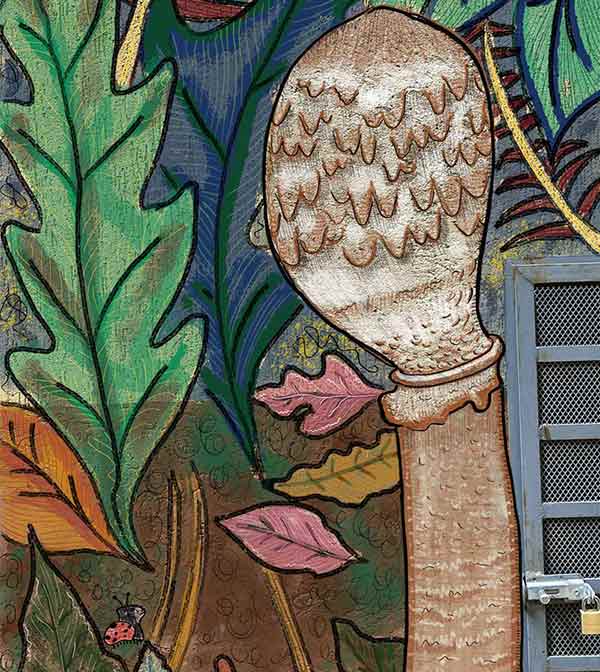
Rebellious adolescence
We imagined it young and rebellious, with a cap on its head and a psychedelic forest background.
—————–

Like flowers in concrete
—————–
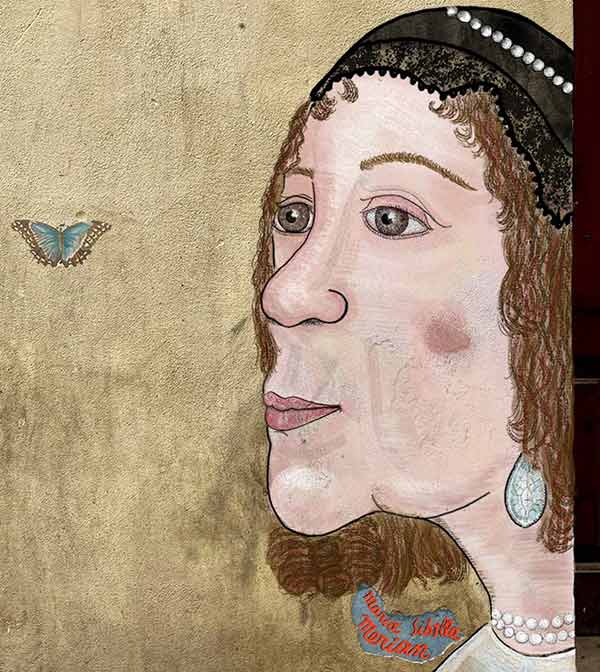
Homage to Maria Sibylla Merian
Considered one of the founders of modern entomology, Maria Sibylla Merian was a 17th-century artist and naturalist who combined a passion for drawing with an interest in animals, especially insects.
No one before Merian had studied lepidopterans, fully understanding their life cycle.
Such scientific observation was a truly revolutionary achievement in the seventeenth century and was documented with extraordinary accuracy through the illustrations of the artist scientist, who was even able to reproduce every single hair of the caterpillars and use the exact colors of butterfly wings.
Sibylla’s curiosity had no limits; she sought to study collections of butterflies from Central and South America, but her desire was to be able to observe these live animals in their natural context, to see them fly and to discover the plants on which they fed.
So at the age of 52 he set off with his daughter Dorothea for Suriname, thanks to the funds raised by selling his works.
It was not an easy sojourn due to weather conditions and poor health, but in two years he managed to organize numerous explorations in the tropical forest and gather such a wealth of information that he wrote the book Metamorphosis of the Insects of Surinam (published in 1705), with 60 plates of copper-engraved illustrations.
The illustrations include not only butterflies, but also the largest tarantula on the planet, frogs, lizards, reptiles, iguanas, birds, and an alligator grappling with a venomous snake.
It was a huge success in Europe, and Maria Sibylla finally saw her work recognized.
—————–
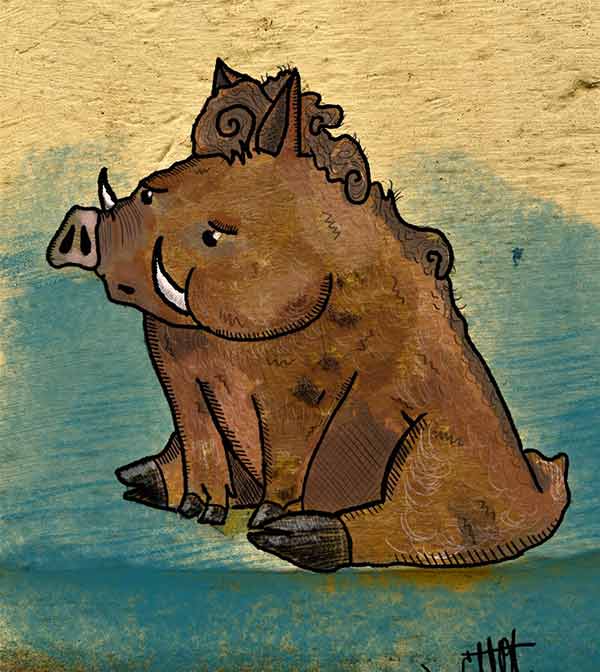
Wild boar
—————–
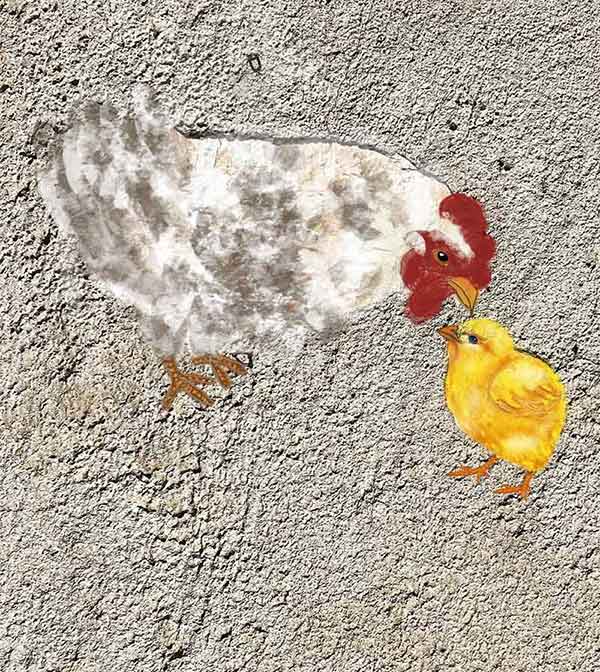
Hen
—————–

Dreaming Imperial Piano
“The warmth of the sun’s first rays warmed my blood, and shone back into the air a restorative balm, a delightful enchantment, which penetrated to the depths of my soul, and made me feel with excess the happiness of existing, he is impossible to experience a more enlivening sensation, it partakes of voluptuousness and exhilaration: health and happiness circulated everywhere in my veins.”
F. Minà Palumbo Introduction to the Natural History of the Madonie.
—————–
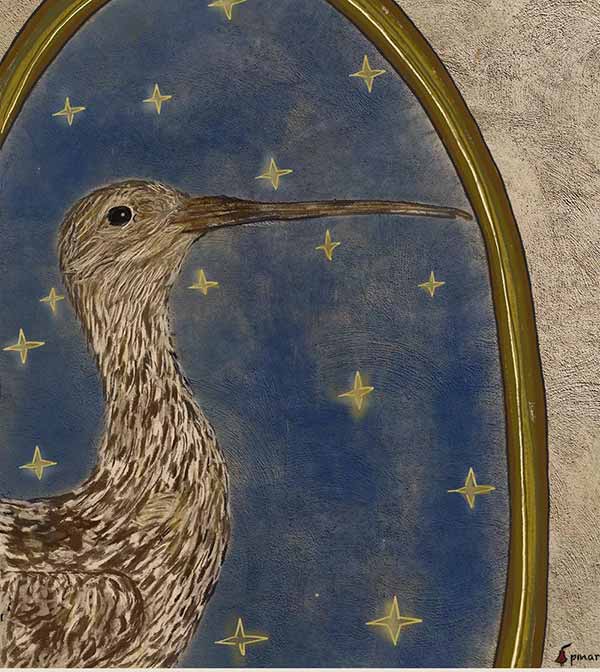
Royal Chiurlottello
Morocco was a prime wintering area, but the last flocks of more than 100 individuals were observed in January 1964 in Puerto Cansado Lagoon, Khnifiss (500-800 ind.) and in December 1974 in Oued Chebeika (123 ind.).
Since 1995 at the last known regular wintering site in Morocco, Merja Zerga, the Chiurlottellus has not been observed.
The last observations of this species in the world date back to 1999, when it was sighted in Greece and Oman.
The specimen kept in the Francesco Minà Palumbo Naturalistic Museum in Castelbuono was most likely captured in the 1960s-70s around Cefalù and prepared by the taxidermist Miccichè, from whom Venchierutti often obtained supplies.
—————–
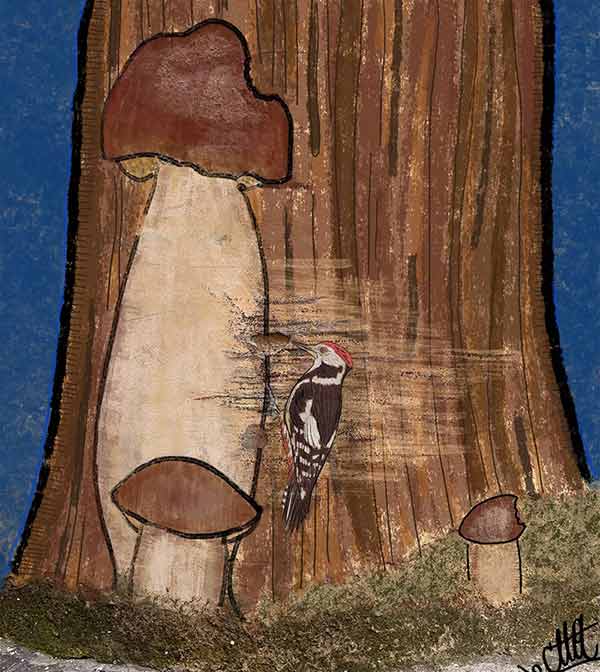
Porcini with Woodpecker
—————–
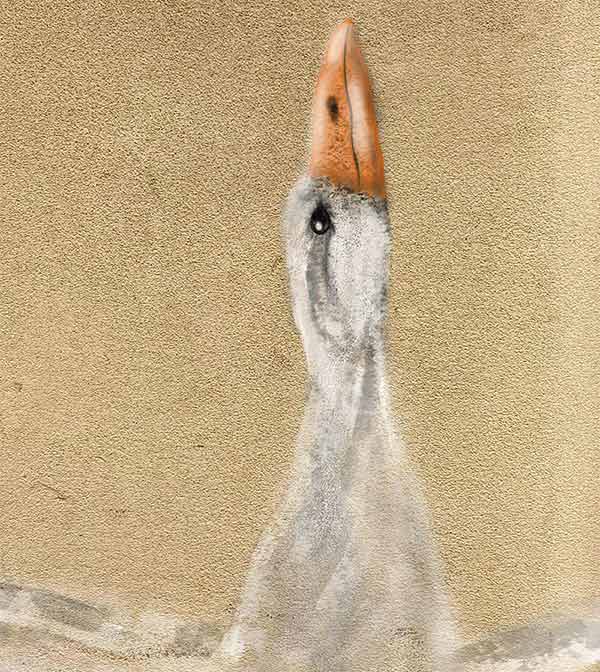
Flying Freely
—————–
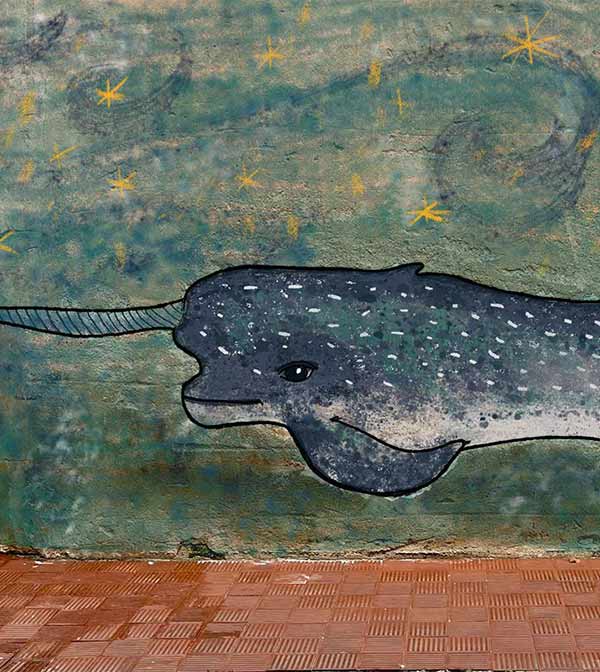
Find the intruder
It is not our fault that Mina Palumbo has never studied the oceans…but there is indeed a narwhalo!!!! in this spot. How it then made it all the way to the Mediterranean is a mystery….
—————–
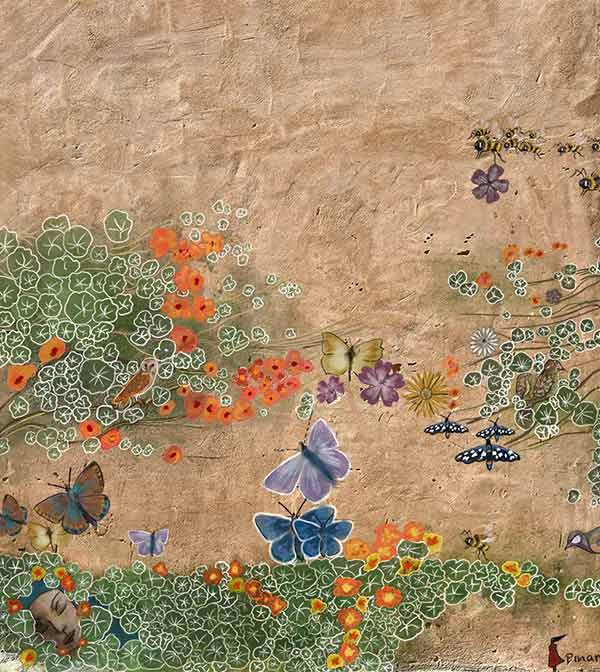
Fantasy by Minà Palumbo
—————–
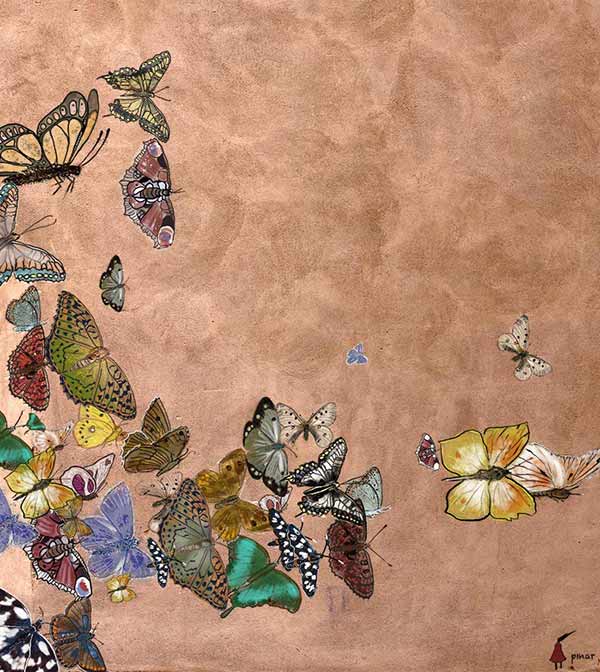
Butterflies
In the beautiful beginning of spring, as soon as the first little flowers shine purple, white and yellow on the green meadows, and the March sun shines in the blue and serene sky enlivening nature with its warm rays (…) it is not uncommon to see the Pavon of the day emerge from a rough creme de la creme of rotten trunk, which at first stuntedly drags along until perched on a dry brushwood it spreads its wings to better expose them to the sun, and then lively and gay it circles to seek a mate.
(…) The female comes out of her retreat, the male immediately follows her, precedes her, circles around her to roam her; as the temperature rises this simple language of love becomes more expressive, they approach, they bump into each other in flight, the male wants to oppose the flight of the female figent, and this demure one avoids the caresses and amorous demonstrations of his mate, who more demanding, more ardent grows in love, and and urges more by flying around the indifferent female, who in the end yields more out of convenience than desire, and more to obey the imposing law of nature.
The Cleopatra Butterfly awakens to love as well at low temperatures; the male with his fringed wings follows the swift flight of the disdainful female, and the more he flees just as many males join in the erotic courtship, and strive one another to be as close as possible to their beauty, who always unconcernedly tires the ardent cupids, who yearn for her.
(…) the males eventually bored with such carelessness abandon her and there remains the most ardent, who will be the chosen one and then the female with a slight flicker of her wings shows her consent.
The persevering male as soon as his mission is accomplished abandons her and flees, but she then in fulfillment of a law of nature does not disdain the caresses of a welcome.
Text from Loves of Insects – “La Favilla,” a.
II (1857-58)
—————–
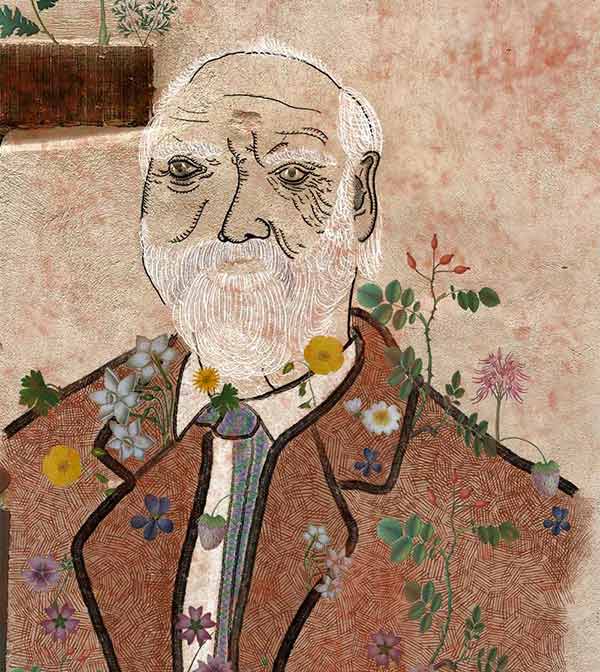
Portrait of F. Minà Palumbo
When we started working on Details #Castelbuono we immediately encountered this stain…which immediately made us weigh in on Francesco Minà Palumbo.
—————–
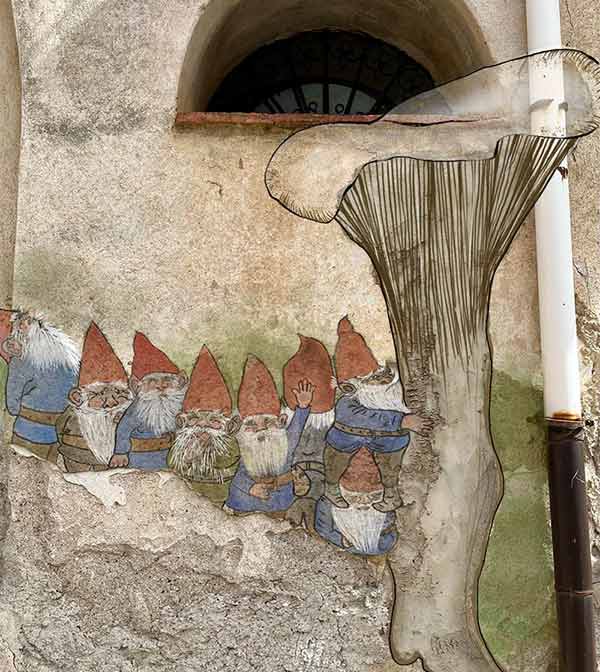
Secret Mission
Design entrusted to Angela Sottile & Marianna.
—————–
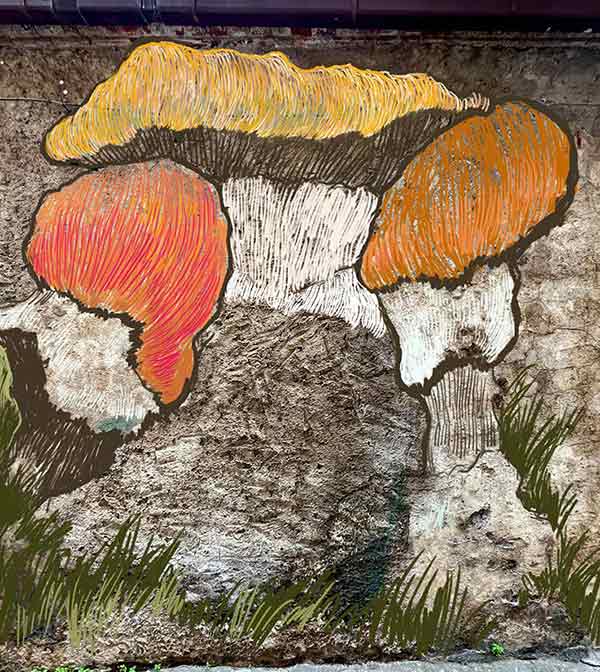
Mushrooms
Macchia entrusted to Stefania Cordone.
—————–
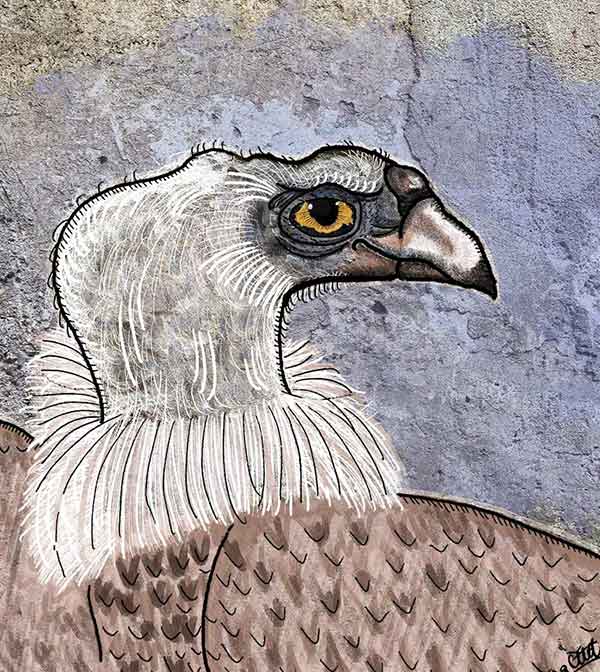
Griffin
The region which can be regarded as the habitual sojourn of the griffon is at two thousand feet, from thence it launches itself into the aerial Ocean, and rises to a great height (…) one sees the griffon making great circles and seeming like a small bird, such is the extraordinary elevation to which it reaches; what then is the atmospheric pressure which it can endure, while we see it descend in the deepest valleys to the edges of the sea, and then rise almost twice as high over the height of the Madonie?
(…) The griffon vulture may fast for several days, but when it finds a carrion so fleshy that it cannot take flight, then it runs leaping until it finds a prominence that facilitates its first momentum.
F. Minà Palumbo Iconography of the Natural History of the Madonie Mountains.
—————–
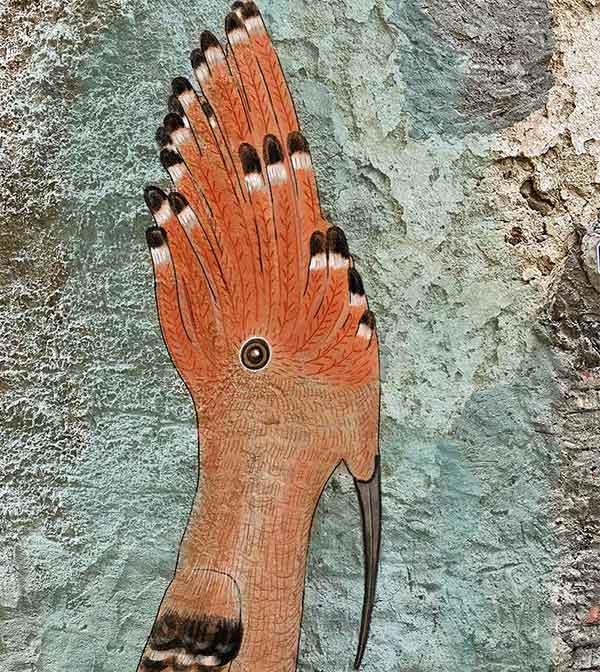
Hoopoe
“The Bubbola comes at the end of April, dwells in the mountains, and in the wooded and bushy hills as in San Focà, Cava, Ortaggio; it nests in the holes of the trees, leaves in autumn. Mr. Guerrieri keeps a beautiful colored drawing of it on the live.”
—————–
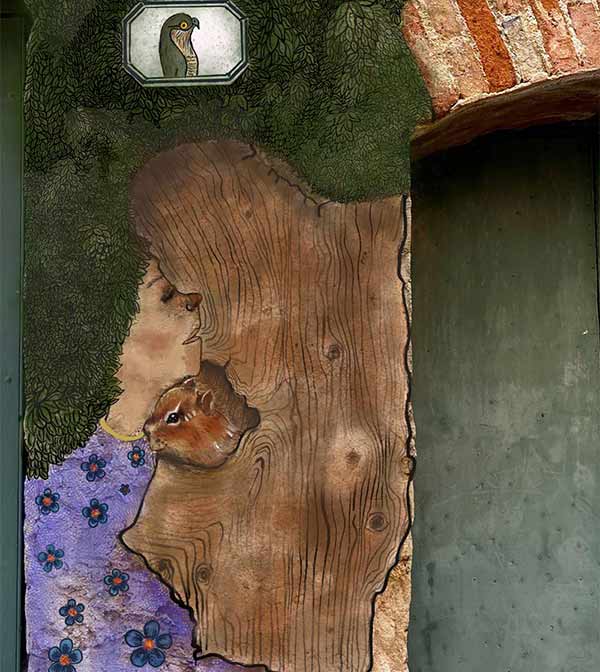
Spirit of Nature
—————–

Garden
The collection includes about 3,500 specimens distributed in 78 boxes.
Francesco Minà Palumbo’s entomological collection was certainly a larger collection, much of it irreparably ruined while the naturalist was still alive.
As can be seen from the obituary that Luigi Failla Tedaldi drafted upon his master’s death, the lost part represented the complete Nebrodense entomofauna and was therefore of inestimable interest.
However, the remaining material does not lose the suggestiveness of large collections (about 15,000 specimens) and, for that matter, it is still possible to find specimens of not inconsiderable scientific interest such as nomenclatural types, individuals belonging to rare entities, etc.
—————–

Weasel
—————–
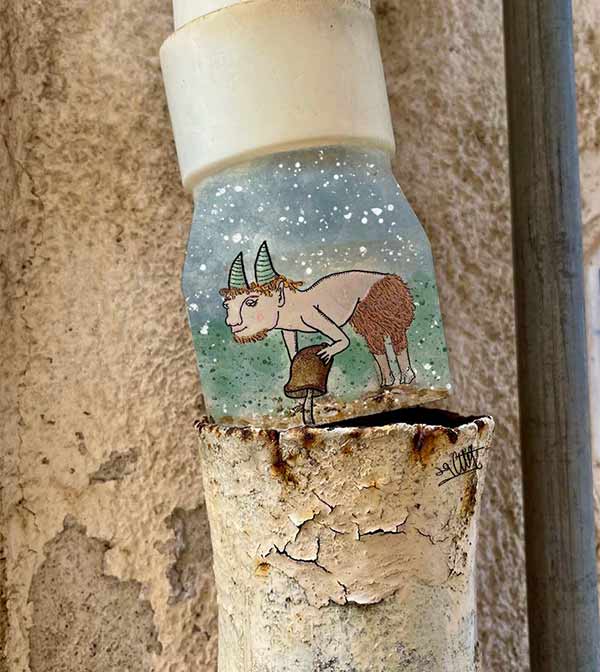
Faun
Satyr or faun, minor deity strongly associated with fertility and the life force of nature.
Here in the act of picking a poplar mushroom (FUNGO AGROCYBE PHOLIOTA AEGERITA).
—————–
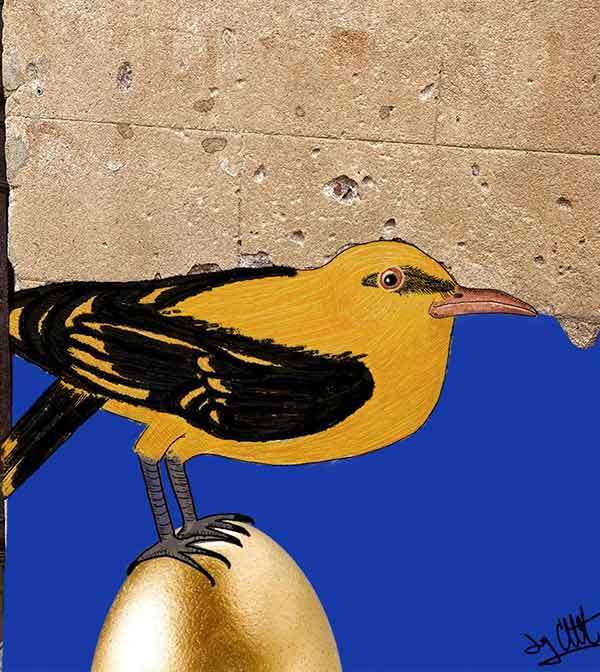
Oriolus Oriolus
F. Minà Palumbo Iconography of the Natural History of the Madonie Mountains, 1853.
—————–
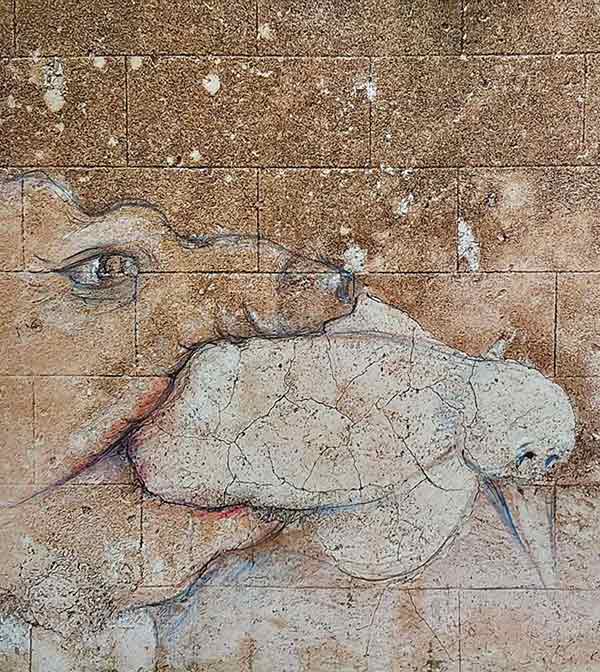
The mauled peace
—————–
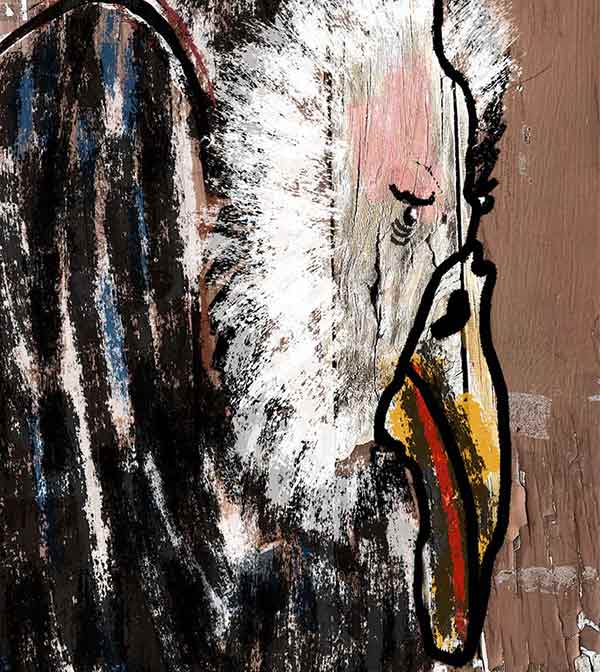
Griffin 2
—————–
WE GIVE THE NUMBERS ON THE ROUTE!
Below are some data characterizing the route taken in Castelbuono.













